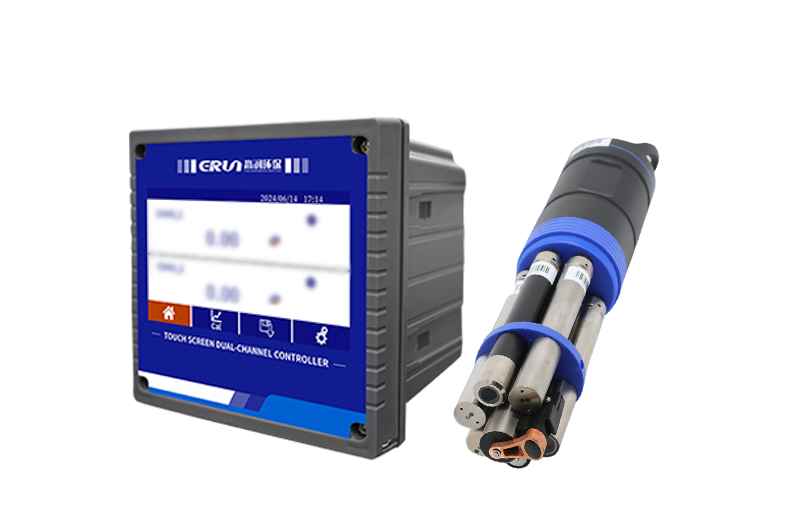Safe drinking water is a cornerstone of public health and a fundamental human right. Yet, ensuring water remains free from contaminants from source to tap is a complex challenge, with threats like industrial pollution, agricultural runoff, and aging infrastructure. Traditional water quality testing, which relies on periodic sampling and laboratory analysis, is thorough but slow, often delaying responses to contamination events. Online monitoring systems offer a transformative solution, providing continuous, real-time data to safeguard water supplies. This article delves into the mechanics of online monitoring, key parameters tracked, technologies involved, international standards, benefits, challenges, and real-world applications.

Drinking water online monitoring uses automated sensors and analyzers to measure water quality parameters continuously, either at treatment plants or within distribution networks. Unlike traditional methods, which might test water a few times daily or weekly, these systems deliver data every few minutes, enabling immediate detection of quality issues. This real-time approach is critical because water quality can shift rapidly due to pipe leaks, treatment failures, or external contamination. By providing instant insights, online monitoring empowers utilities to act swiftly, minimizing health risks and ensuring compliance with regulations.
Online monitoring systems focus on parameters that indicate water safety and quality. These are chosen for their health implications, impact on treatment processes, or aesthetic effects. Below are some of the most commonly monitored parameters:
pH: Determines water’s acidity or alkalinity, influencing taste, pipe corrosion, and disinfection efficacy.
Turbidity: Measures water clarity, with high levels suggesting suspended particles or pathogens.
Conductivity: Indicates total dissolved solids (TDS), affecting taste and signaling salinity or contamination.
Free Chlorine: Ensures sufficient disinfectant to eliminate pathogens in distribution systems.
Total Organic Carbon (TOC): Tracks organic matter, which can form harmful disinfection byproducts.
Ammonia: Signals pollution (e.g., from wastewater) and affects chlorine’s disinfection power.
Nitrate: Poses health risks, particularly to infants, at high levels.
Temperature: Influences chemical reactions, microbial growth, and water taste.
The table below summarizes these parameters, their significance, and WHO guideline values where applicable:
pH | Affects taste, corrosion, disinfection efficacy | 6.5–8.5 |
Turbidity | Indicates suspended particles, potential pathogens | < 5 NTU |
Conductivity | Measures total dissolved solids, salinity | - |
Free Chlorine | Ensures effective disinfection | - |
Total Organic Carbon | Indicates organic matter, risk of disinfection byproducts | - |
Ammonia | Signals pollution, affects disinfection | - |
Nitrate | Health risk, especially for infants | 50 mg/L as NO₃ |
Temperature | Influences reactions, microbial growth, taste | - |
Note: Parameters without WHO guidelines are monitored for operational control or aesthetic quality, guided by national standards or best practices.
Online monitoring relies on advanced technologies to deliver accurate, real-time data. Key tools include:
Electrochemical Sensors: Measure pH, conductivity, and dissolved oxygen with high precision, ideal for continuous use.
Optical Sensors: Assess turbidity and organic content (e.g., via UV absorbance) using light-based techniques.
Spectrophotometers: Analyze TOC, nitrate, and other compounds through UV-Vis spectroscopy, offering detailed insights.
IoT and Data Networks: Enable remote data transmission and integration with cloud platforms for real-time analytics.
The World Health Organization’s Guidelines for Drinking-water Quality (GDWQ) are the global benchmark for safe drinking water, shaping national regulations (WHO Guidelines). These guidelines set health-based targets for contaminants, such as nitrate (50 mg/L) and arsenic (10 μg/L), and advocate for risk management through Water Safety Plans. They emphasize continuous monitoring to verify compliance and ensure safety across the supply chain, from catchment to consumer.
Online monitoring aligns perfectly with these standards by providing constant data to confirm that water meets guideline values. For instance, real-time turbidity monitoring ensures levels stay below 5 NTU, while chlorine sensors verify disinfection efficacy. The GDWQ’s focus on proactive risk management underscores the value of online systems in preventing contamination events.
Online monitoring offers significant advantages for water utilities and consumers:
Rapid Issue Detection: Real-time data allows immediate response to contamination or quality deviations, protecting public health.
Operational Efficiency: Continuous insights optimize treatment processes, reducing chemical and energy use.
Cost Savings: Early problem detection minimizes costly incidents and reduces reliance on lab testing.
Regulatory Compliance: Ensures adherence to WHO and national standards, avoiding fines and legal issues.
Public Trust: Transparent, reliable data reassures consumers about water safety.
These benefits make online monitoring a game-changer for water management, particularly in urban areas with complex distribution networks.
Despite its advantages, online monitoring has challenges:
High Initial Costs: Installing sensors and networked systems requires significant investment, though long-term savings often justify this.
Maintenance Needs: Sensors need regular calibration and cleaning to maintain accuracy, demanding skilled staff and resources.
Data Management: Handling large volumes of real-time data requires robust software and expertise for analysis and storage.
Addressing these challenges involves strategic planning, training, and investment in scalable technologies, but the benefits far outweigh the hurdles.
Water utilities worldwide are embracing online monitoring to enhance water safety. For example, systems deployed in cities use sensor networks to track parameters like pH and chlorine, enabling proactive management of treatment and distribution. A notable case involved a European utility using Bürkert’s Type 8905 Online Analysis System to monitor water quality for a large community, achieving consistent compliance and operational efficiency. Such applications highlight the practical impact of online monitoring in delivering safe water.
Online monitoring systems are revolutionizing drinking water management by providing continuous, real-time insights into water quality. By tracking critical parameters and aligning with WHO standards, these systems ensure safety, optimize operations, and protect public health. While challenges like costs and maintenance exist, the benefits—rapid issue detection, cost savings, and regulatory compliance—make online monitoring indispensable. As technology advances, these systems will play an even greater role in securing safe drinking water for communities worldwide.